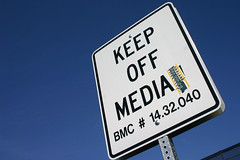infected minds

Richard Dawkins argues that religion is like biological and digital viruses, spreading from mind to mind, epidemically. Unlike science, which Dawkins likens to nonviral software, religion spreads not because people willfully accept its ideas, but because these ideas carry a "Copy Me!" command.
While I like his description of the spread of ideas as an epidemic, and the notion that complexes of ideas, just like complexes of genes, will tend to spread together if they favour each other, I think the fundamental thrust of his argument, which tries to taint religion by likening it to disease, is flawed.
As he readily admits, the phenomenology of the spread of scientific ideas is indistinguishable from that of any other belief system. The difference, Dawkin's argues, is that science adheres to empirical testing, while religion does not. But that alone establishes a perfect symmetry, where the zealot could triumphantly cry "exactly! and that's why religion is superior. Quia absurdum!"
The problem with religion is not that it's an attractive set of mutually enforcing beliefs that spreads through populations of minds - that's true for science, as well. It's that these beliefs claim jurisdiction over empirical matters, when at their very core is a disdain for empirical process.
In short, not the viral form of religion, but its content, is what should bring us in opposition. Its virulence just makes it a more formidable and frustrating enemy.






